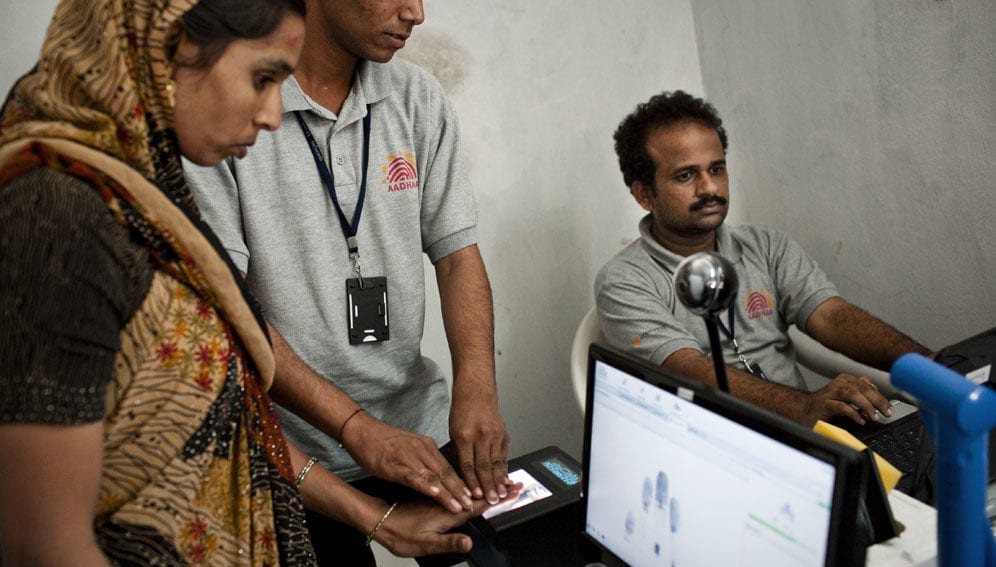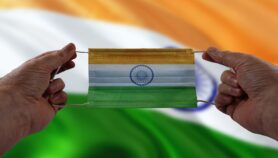By: Ranjit Devraj
Send to a friend
The details you provide on this page will not be used to send unsolicited email, and will not be sold to a 3rd party. See privacy policy.
[NEW DELHI] India’s Supreme Court on Wednesday (26 September) restored India’s biometric identity system to the purpose it was originally intended for — to provide access to food entitlements and government benefits to hundreds of millions of the country’s poor and marginalised.
Called Aadhaar (or foundation), the scheme envisages capturing iris images and fingerprints of India’s 1.3 billion people and assigning each citizen a unique 12-digit number. As the world’s biggest biometric identification exercise it has received wide attention, especially from countries wishing to emulate the plan but concerned at the possible pitfalls.
“What we are emphasising is that the remedy is to plug the loopholes rather than axe a project, aimed for the welfare of a large section of the society”
Justice A.K. Sikri, Supreme Court
Launched in 2009, Aadhaar ran into stiff resistance from civil society groups when the ruling right-wing Bharatiya Janata Party (BJP) that won elections in 2014, sought to make it business-friendly and made enrolment mandatory for a range of activities. Civil society groups reacted by moving court to have the scheme scrapped altogether.
“What we are emphasising is that the remedy is to plug the loopholes rather than axe a project, aimed for the welfare of a large section of the society,” said Justice A.K. Sikri, member of the five-man bench of the court, noting that scrapping the scheme would hurt the interests of the originally intended beneficiaries.
The court did, however, take note of security and privacy concerns expressed by civil society litigants and refused to allow the government to extend the ‘Aadhaar’ scheme for such activities as opening a bank account, subscribing to mobile phone services and enrolment in schools and educational institutions.
Significantly, the court struck down as unconstitutional provisions that allowed private corporations to use Aadhaar as a means of authentication for contracts with individuals on the grounds that this could open the way for commercial exploitation of private data.
As for fears expressed by petitioners that the Aadhaar identification system would turn the country into a police state, the court ruled that only high-ranking government officials could authorise a breach of personal data and only in the presence of a sitting judge.
The court has ordered redressal to anyone who suffers data or identity theft due to lapses on the part of the Unique Identification Authority of India, the entity tasked with managing the programme.
Collecting biometric data is now restricted to iris image and fingerprints and all data is to be maintained in separate silos with any merger of data to produce a profile of an individual prohibited. Data used for authentication cannot be stored beyond six months on any archive and isolation from Internet access has to be enforced.
The bench did have a dissenting voice in Justice D.Y. Chandrachud who said the potential for surveillance and mass-profiling continues to exist as also the possibility of leakages from the database. “Data must all the time vest with the individual,” he said in a separate ruling.
“This ruling takes care of citizens’ rights and it ensures we don’t have a surveillance state in place — it ensures that our privacy is not intruded into, and at the same time, it protects the rights of the marginalised,” says Kapil Sibal, prominent lawyer and senior member of the Congress party which introduced the scheme but lost power in elections held in 2014.
“We challenged Aadhaar because it went beyond the public distribution system, beyond protecting the marginalised, and tried to create a surveillance state,” Sibal said.
The court said: “We may record here that (Aadhaar) enrolment is of voluntary nature. However, it becomes compulsory for those who seek to receive any subsidy, benefit or service under the welfare scheme of the government expenditure whereof is to be met from the Consolidated Fund of India.”A key objective of the Aadhaar scheme is to prevent leakage from India’s mammoth US$24 billion annual ‘food-for-work’ scheme, introduced in 2004 as the world’s largest welfare programme.
This piece was produced by SciDev.Net’s Asia & Pacific desk.














